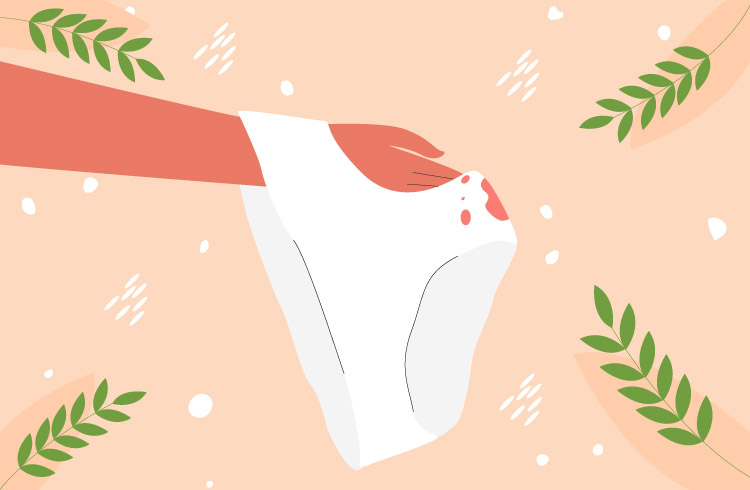LH tests are the same thing as ovulation tests, they can track LH levels in your body and pinpoint the LH surge, which helps to identify that ovulation is about to occur - if you track your LH and spot your LH surge, you can time sex for pregnancy perfectly!
It’s always easier said than done! Keep reading to find out why LH tests can help you conceive and how to test them properly.
How LH Surge Affects Your Fertility
As many of you will know, the first day of your cycle is the day your period arrives, it signals the beginning of the follicular phase. This phase usually lasts between 3 and 7 days, during which the FSH (follicle-stimulating hormones) is sent out by the pituitary gland to stimulate the ovaries to produce multiple follicles, each containing an immature egg.
As the egg matures, it no longer needs FSH to grow and estrogen levels begin to increase, which causes the lining of the womb to thicken. This phase continues to prepare the uterus for the implantation of a fertilized egg.
The maturest egg will occur once estrogen reaches a certain level and an LH surge will then trigger the release of it. So it’s safe to say an LH surge contributes to ovulation.
Tracking your LH gives you insight into your fertile window — the few days when having unprotected sex is more likely to lead to conception. And the LH surge identifies your two most fertile days to help you tim
e sex accurately.

The Best Time to Have Sex for Pregnancy Based on Your LH Levels
Getting pregnant, timing is key.
The most important thing to remember when trying to conceive is that there are only ever 7 days in a woman's cycle that sex can result in pregnancy, the 5 days before ovulation, the day of ovulation, and the day afterward. This is because sperm can only survive for a maximum of 5 days in the female body, and once the new egg (or ovum) is released it has a maximum lifespan of 24 hours.
Schedule baby-making sex accordingly
Women who are trying to get pregnant should time intercourse once they see an increase in LH, and continue to have unprotected sex until ovulation has been confirmed. This ensures that the sperm is waiting in the uterus and fallopian tubes when the egg is released.
Some couples are able to have sex every day through the fertile window, but it’s also fine to have sex every other day. Men who have a low sperm count are often advised that every other day is better than every day as this allows time for sperm to increase in between each baby-making session.
Tips and Tricks for Testing Your LH Levels Accurately
When to start to use LH tests
LH levels and surge dates can vary massively from woman to woman. For this reason, we will suggest a unique cycle day to begin testing, we remind you each month by sending you an in-app notification. We work this day out using calculations about your cycle and period length.
We first suggest you test once a day, and then when you see a peak test you should test every 4 hours. Ovulation usually happens 24-36 hours after your first peak reading, once your LH levels have reduced, we have a better idea of when ovulation took place. Learning to read your cycle and symptom patterns will help you to spot your fertile window and ovulation each cycle.
(Download Femometer APP here.)
What to use to conduct LH testing
Original LH test strips
Many women choose to use LH test strips to measure the levels of LH in the urine which is usually held in the urine stream, or into a sample of urine but each test varies so always best to check the specific instructions that come with your kit.
Advanced digital OPKs
The tricky thing about test strips is that testing results can be quite difficult to read and the difference between high and peak is not so obvious. That’s why we call OPKs an advanced method.
Ovulation Predictor Kits (or OPKs for short) are also a method of measuring your LH levels but save you time in figuring out the results. Take IVY112™ Digital Ovulation Test Kit for example, it can intelligently read your LH levels and give you a symbolic sign of the levels as in -, +, ++. When connected to the Femometer APP, you will have your LH level drown automatically with the fertile window being so easy to find!
If you want to do the testing in a traditional way, Femometer APP can help! It can intelligently read photographs of your LH strips and records your LH levels, giving you a numerical value for your reading in the app. This data is then added to the other symptoms you’ve logged to help you understand the patterns of your fertile window and ovulation.
(Shop Femometer IVY112™ Digital Ovulation Test Kit)
(Shop Femometer LH Ovulation Test)
Things to be aware of when testing LH
LH testing can be fiddly and a bit confusing sometimes, we’ve tried to make it easier by automating your reading and recording and by helping you to time your tests. Here are a few other things you may want to keep in mind.
Women with PCOS
It is very common that women with PCOS can have raised levels of LH throughout their cycle, this can make it more difficult to pinpoint the fertile window and ovulation using LH tests alone.
Women approaching menopause
Women who are approaching menopause may have raised levels of LH throughout their cycle.
Other factors affecting LH test results
Drinking too much water before taking a test and using the first-morning urine can also affect your LH test results.
Test LH together with BBT tracking
It’s quite easy to start testing too late, you may miss your peak and you won’t know when you’ve ovulated unless you’re also tracking symptoms and BBT.
(Shop Femometer Vinca Smart Basal Thermometer)
Round up!
- An increase in LH can mean you're entering your fertile window
- Your LH surge is a good indicator that you will ovulate soon
- LH can be affected by many things, including drinking too much water
This article is the original creation of Femometer. All rights reserved by Femometer Inc. To reproduce, distribute, or reference the content, please reach out to us in advance to prevent any potential legal issues. Copyright © Femometer Inc.









